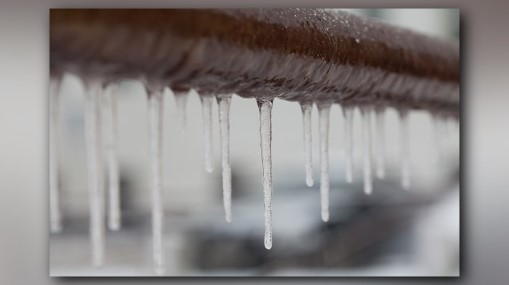Preventing Frozen Plumbing in Cold Weather: Essential Advice
Preventing Frozen Plumbing in Cold Weather: Essential Advice
Blog Article
We have unearthed this article relating to How to Prevent Your Pipes From Freezing below on the web and concluded it made sense to discuss it with you on my blog.

Cold weather can damage your pipes, particularly by freezing pipelines. Here's how to avoid it from occurring and what to do if it does.
Intro
As temperature levels drop, the danger of icy pipelines boosts, possibly causing costly fixings and water damage. Understanding exactly how to stop frozen pipes is crucial for homeowners in cold environments.
Prevention Tips
Shielding vulnerable pipelines
Wrap pipelines in insulation sleeves or use warm tape to safeguard them from freezing temperatures. Concentrate on pipes in unheated or external areas of the home.
Home heating strategies
Keep indoor spaces sufficiently warmed, particularly locations with plumbing. Open closet doors to enable warm air to distribute around pipelines under sinks.
How to identify frozen pipes
Search for reduced water circulation from taps, unusual smells or sounds from pipelines, and noticeable frost on exposed pipelines.
Long-Term Solutions
Structural changes
Take into consideration rerouting pipelines far from outside wall surfaces or unheated locations. Include extra insulation to attic rooms, cellars, and crawl spaces.
Upgrading insulation
Purchase high-grade insulation for pipelines, attic rooms, and walls. Appropriate insulation helps keep consistent temperatures and decreases the risk of frozen pipelines.
Shielding Exterior Pipes
Yard pipes and outside taps
Detach and drain yard pipes prior to wintertime. Set up frost-proof faucets or cover exterior faucets with insulated caps.
Comprehending Frozen Pipelines
What triggers pipelines to freeze?
Pipelines freeze when subjected to temperatures listed below 32 ° F (0 ° C) for expanded periods. As water inside the pipelines ices up, it expands, putting pressure on the pipeline wall surfaces and potentially causing them to rupture.
Risks and damages
Icy pipelines can bring about supply of water disturbances, residential or commercial property damages, and pricey repair services. Ruptured pipes can flooding homes and cause comprehensive structural damages.
Indications of Frozen Piping
Determining frozen pipes early can avoid them from breaking.
What to Do If Your Pipes Freeze
Immediate actions to take
If you suspect frozen pipes, keep faucets open to ease pressure as the ice melts. Use a hairdryer or towels soaked in warm water to thaw pipelines gradually.
Conclusion
Avoiding icy pipes requires proactive measures and fast actions. By understanding the causes, signs, and safety nets, home owners can secure their plumbing throughout winter.
5 Ways to Prevent Frozen Pipes
Drain Outdoor Faucets and Disconnect Hoses
First, close the shut-off valve that controls the flow of water in the pipe to your outdoor faucet. Then, head outside to disconnect and drain your hose and open the outdoor faucet to allow the water to completely drain out of the line. Turn off the faucet when done. Finally, head back to the shut-off valve and drain the remaining water inside the pipe into a bucket or container. Additionally, if you have a home irrigation system, you should consider hiring an expert to clear the system of water each year.
Insulate Pipes
One of the best and most cost-effective methods for preventing frozen water pipes is to wrap your pipes with insulation. This is especially important for areas in your home that aren’t exposed to heat, such as an attic. We suggest using foam sleeves, which can typically be found at your local hardware store.
Keep Heat Running at 65
Your pipes are located inside your walls, and the temperature there is much colder than the rest of the house. To prevent your pipes from freezing, The Insurance Information Institute suggests that you keep your home heated to at least 65 degrees, even when traveling. You may want to invest in smart devices that can keep an eye on the temperature in your home while you’re away.
Leave Water Dripping
Moving water — even a small trickle — can prevent ice from forming inside your pipes. When freezing temps are imminent, start a drip of water from all faucets that serve exposed pipes. Leaving a few faucets running will also help relieve pressure inside the pipes and help prevent a rupture if the water inside freezes.
Open Cupboard Doors
Warm your kitchen and bathroom pipes by opening cupboards and vanities. You should also leave your interior doors ajar to help warm air circulate evenly throughout your home.

We hope you liked our section about How To Avoid Freezing Pipes. Thank you for taking the time to read through our content. Enjoyed reading our article? Please quickly share it. Help someone else discover it. Thanks for taking the time to read it.
Click Here To Read More Report this page